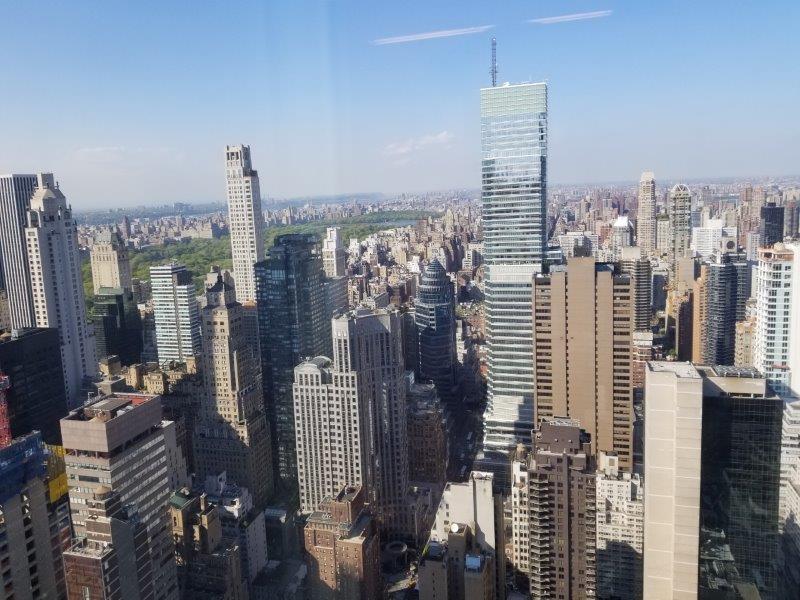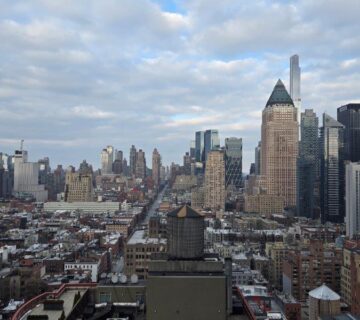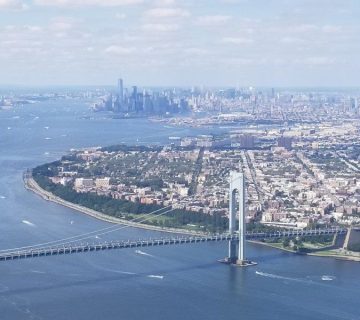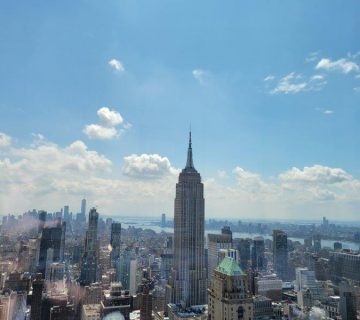Manhattan, also known as the Big Apple, is the most densely populated borough in New York City and is home to some of the most iconic landmarks in the world. As a melting pot often called the crossroads of the world, it offers a diverse range of experiences that cater to different lifestyles and personalities attracting millions of visitors every year. Manhattan neighborhoods have their own distinct character and charm, and I love that there is always more to explore in all that Manhattan – and New York City – have to offer.
Manhattan is home to some of the tallest skyscrapers in the world, including the World Trade Center, Empire State Building and the Chrysler Building. Midtown Manhattan is the commercial hub of the city, with Grand Central, Times Square and Rockefeller Center attracting millions of tourists every year. SoHo, on the other hand, is known for its trendy art galleries, upscale boutiques, and chic restaurants making it a popular destination for fashionistas and foodies alike. The Financial District is the financial capital of the world.
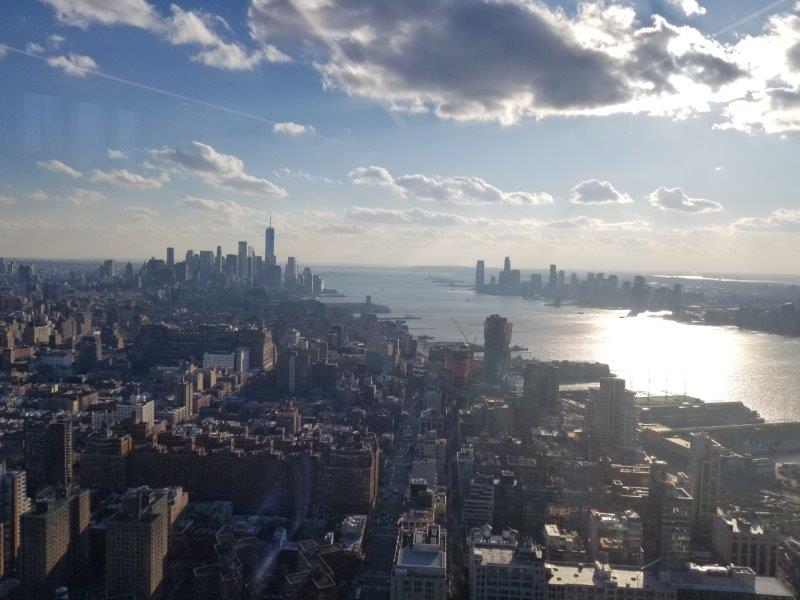
Table of Contents
Manhattan Geographical Overview
Manhattan is an island located at the mouth of the Hudson River in New York City. It is the most densely populated borough and the economic and cultural center of the city. Manhattan is approximately 13.4 miles long and 2.3 miles wide, with a total area of 22.83 square miles.
Manhattan is divided into several neighborhoods, each with its own unique character and flair, and its own distinct architecture, history, and cultural attractions.
Manhattan is surrounded by water on all sides, with the Hudson River to the west and the East River to the east. The island is connected to the mainland by several bridges and tunnels, including the George Washington Bridge, the Lincoln Tunnel, and the Holland Tunnel.
Manhattan Map with Neighborhoods
Here is a map of Manhattan with neighborhoods, which can help to visualize their location. You can zoom in or out of the map based on the neighborhood you are interested in.
While Manhattan is easy to navigate through its well defined grid system of cross streets, with Avenues running in a north south direction and Streets running from in an east west direction, there is a point below which the street numbers change to names where the original street layouts were retained, and that is when even seasoned New Yorkers are comfortable with using online maps, such as Google Maps, to navigate their way through the City.
It is also common to see the word Downtown causing confusion about what it refers to. Downtown Manhattan is considered by some to be south of 14th Street, while others consider it to be south of 30th Street. However, it is important to remember that while taking subways, downtown is anything that is south of where you are at, and uptown is north of where you are at.
Upper Manhattan Neighborhoods
Upper Manhattan is the most northern region of Manhattan, bordered by the Harlem River to the east and the Hudson River to the west. It includes neighborhoods such as Inwood, Washington Heights, Harlem, and Marble Hill.
Fort George
Fort George is located in the northern part of Manhattan, and is bounded by Fairview Avenue to the north, Broadway to the east, West 183rd Street to the south, and the Harlem River to the west. Fort George is known for its mix of residential and commercial buildings, including several historic Art Deco apartment buildings and the United Palace, which is a former movie palace that now serves as a cultural and performing arts center. In addition to its cultural offerings, Fort George also offers several parks and green spaces, including Highbridge Park, which is located just west of the neighborhood and offers several recreational activities and public events throughout the year. Fort George is a diverse and vibrant neighborhood that offers a unique blend of residential living, cultural opportunities, and recreational activities in the northern part of Manhattan.

Hamilton Heights
Hamilton Heights is located in the northern part of Manhattan in New York City, bounded by 135th Street to the south, 155th Street to the north, Edgecombe Avenue to the east, and Riverside Drive to the west. Hamilton Heights is known for its historic architecture, cultural significance, and diverse community. The neighborhood is home to several landmarks and institutions, including the Hamilton Grange National Memorial, which was the home of Alexander Hamilton, and the City College of New York, which is one of the oldest public colleges in the United States. In addition to its historic and cultural attractions, Hamilton Heights is also known for its vibrant food and drink scene, with a mix of restaurants, cafes, and bars offering cuisine from around the world. The neighborhood offers a unique blend of old-world charm and modern amenities.
Harlem
Harlem is a neighborhood located in the northern part of Manhattan, which is bounded roughly by the Hudson River on the west, the Harlem River and 155th Street on the north, Fifth Avenue on the east, and Central Park North at 110th Street on the south. It is known for its rich cultural history, including the Harlem Renaissance of the 1920s and 30s. Harlem is home to many historic landmarks, including the Apollo Theater, the Cotton Club, and the Abyssinian Baptist Church. Harlem is a diverse and vibrant neighborhood with many historic landmarks, cultural institutions, and small businesses, as well as many restaurants, bars, and shops. The neighborhood has a large African American population, as well as a growing Hispanic community. . It is home to many parks and green spaces, including Marcus Garvey Park, which hosts the Charlie Parker Jazz Festival every year, and St. Nicholas Park. Harlem is often divided into West Harlem and East Harlem, with Fifth Avenue creating the division between the two.
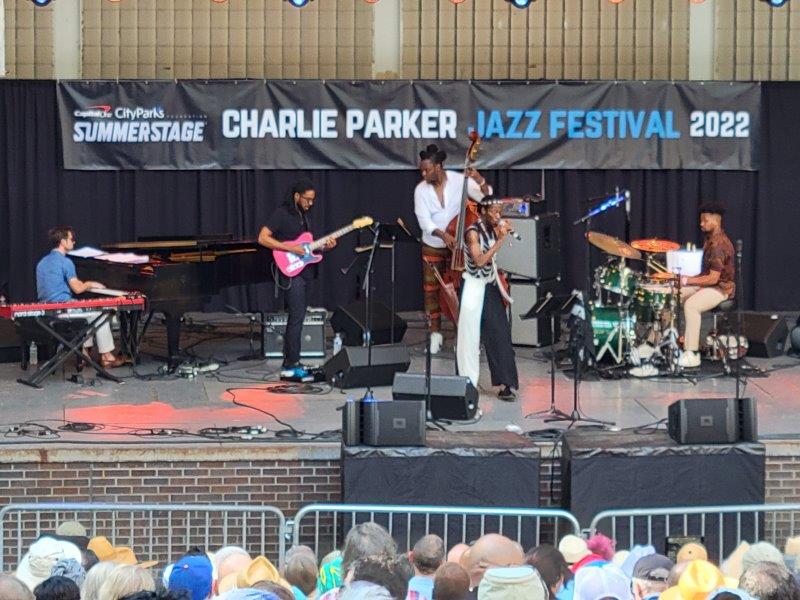
Inwood
Inwood is a neighborhood located at the northern tip of Manhattan bordered by the Harlem River to the east, the Hudson River to the west, Washington Heights to the south, and Marble Hill to the north. It is a primarily residential neighborhood known for its diversity, green spaces, and historic architecture. It is known for its green spaces, including Inwood Hill Park, the last remaining natural forest in Manhattan. Inwood also has a vibrant art scene, with many galleries and studios showcasing the work of local artists. The neighborhood is home to a diverse population, with a large number of Dominican and Jewish residents.
Manhattan Valley
Manhattan Valley is a neighborhood located in the Upper West Side and bounded by West 110th Street to the north, Central Park West to the east, West 96th Street to the south, and Broadway to the west. Manhattan Valley is known for its mix of residential and commercial buildings, as well as its diverse community. Manhattan Valley is also known for its vibrant food and drink scene, with a mix of restaurants, cafes, and bars offering cuisine from around the world. The neighborhood is a popular destination for both locals and tourists, and offers a unique blend of old-world charm and modern amenities.
Manhattanville
Manhattanville is located in the West Harlem area and bounded by 125th Street to the south, 135th Street to the north, St. Nicholas Avenue to the east, and the Hudson River to the west. Manhattanville is known for its mix of residential and commercial buildings, as well as its cultural and historic significance. The neighborhood is home to several iconic landmarks, including the Riverside Church, which is a majestic Gothic Revival structure known for its breathtaking architecture and as a center for progressive social activism. Manhattanville is also home to several academic institutions, including Columbia University’s Manhattanville campus, which is a new 17-acre campus that features state-of-the-art facilities for teaching, research, and entrepreneurship. In addition to its academic and cultural institutions, Manhattanville is also known for its vibrant food and drink scene, with a mix of restaurants, cafes, and bars offering cuisine from around the world. The neighborhood is a popular destination for both locals and tourists, and offers a unique blend of old-world charm and modern amenities.
Marble Hill
Marble Hill is located in the northwest corner of Manhattan, bounded roughly by the Harlem River to the north, the Hudson River to the west, the Harlem River Ship Canal to the south, and the Spuyten Duyvil Creek and Riverdale, Bronx to the east. It was originally part of the Bronx, but was annexed by Manhattan in 1895. Marble Hill is known for its unique geography, as it is separated from the rest of Manhattan by the Harlem River Ship Canal. The neighborhood has a diverse population, with a mix of African American, Hispanic, and white residents. Despite being located on the mainland, Marble Hill is politically part of Manhattan and is known for its unique history. The neighborhood was once an island in the Harlem River, but it was connected to the mainland in the 19th century as part of a canal-building project. Marble Hill is named for the deposits of dolomite marble that were once quarried in the area and used to construct many notable buildings in New York City, including the federal buildings in lower Manhattan when New York was the capital of the United States in the 1780s.
Morningside Heights
Morningside Heights is located in the West Side of Manhattan and is bounded by Morningside Drive to the east, 125th Street to the north, 110th Street to the south, and Riverside Drive to the west. Morningside Heights is known for its historic architecture, academic institutions, and cultural attractions. The neighborhood is home to several iconic landmarks, including Columbia University, Barnard College, and the Cathedral of St. John the Divine, which is one of the largest churches in the world. In addition to its academic and cultural institutions, Morningside Heights is also known for its vibrant food and drink scene, with a mix of restaurants, cafes, and bars offering cuisine from around the world. The neighborhood is a popular destination for both locals and tourists, and offers a unique blend of old-world charm and modern amenities. Morningside Heights is also home to several parks and green spaces, including Morningside Park, which features several public art installations and seasonal events.
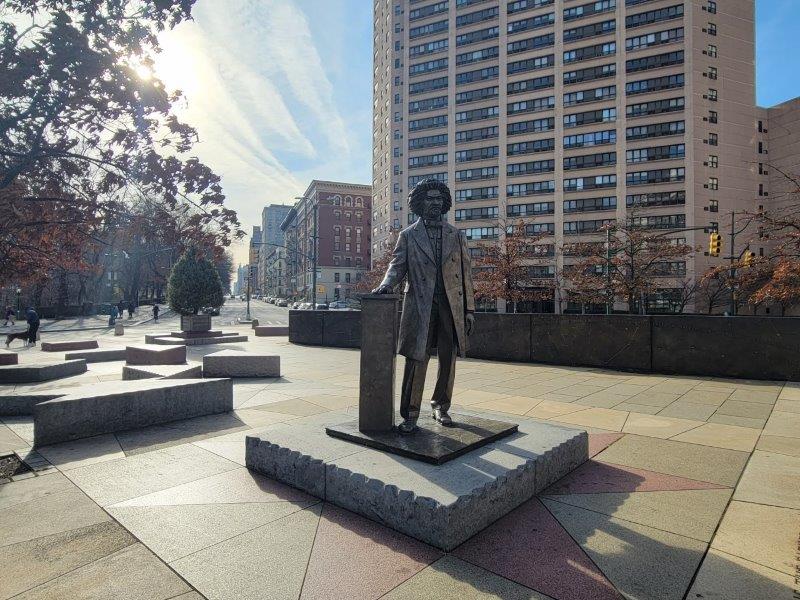
Sugar Hill
Sugar Hill is a neighborhood located in the Harlem and Hamilton Heights neighborhoods of Manhattan, New York City bounded by West 155th Street to the north, West 145th Street to the south, Edgecombe Avenue to the east, and Amsterdam Avenue to the west. Sugar Hill is known for its elegant brownstone buildings and cultural significance, and has a rich history that traces back to the early 20th century. The neighborhood was home to several prominent African American artists, musicians, and writers during the Harlem Renaissance, including Langston Hughes, Duke Ellington, and W.E.B. Du Bois. Today, Sugar Hill is a mix of residential and commercial buildings, and is home to several cultural institutions and landmarks, including the Sugar Hill Children’s Museum of Art and Storytelling, the Harlem School of the Arts, and the Morris-Jumel Mansion, which is the oldest house in Manhattan. The neighborhood is also known for its vibrant food and drink scene, with a mix of soul food restaurants, trendy cafes, and cocktail bars.
Washington Heights
Washington Heights is a neighborhood located just south of Inwood. It is bounded by the Harlem River to the east, 155th Street to the north, the Hudson River to the west, and 155th Street to the south. The neighborhood is named after Fort Washington, a fortification constructed during the American Revolutionary War, and is known for its hilly terrain, historic architecture, and diverse community. It is known for its historic architecture, including the Morris-Jumel Mansion, the oldest house in Manhattan. Washington Heights is also home to the Cloisters, a branch of the Metropolitan Museum of Art that houses medieval art and architecture. The neighborhood also has a vibrant cultural scene, with many restaurants, bars, and small businesses The neighborhood has a large Hispanic population, with many residents of Dominican and Puerto Rican descent.
Uptown Manhattan Neighborhoods
Uptown Manhattan is a region of Manhattan that encompasses several neighborhoods located between 110th Street to the north and 59th Street to the south.
Carnegie Hill
Carnegie Hill is located on the Upper East Side of Manhattan, and is bounded by 86th Street to the south, 96th Street to the north, Third Avenue to the west, and Fifth Avenue to the east. Carnegie Hill is known for its mix of residential and commercial buildings, including several iconic landmarks such as the Andrew Carnegie Mansion, which is now the Cooper Hewitt, Smithsonian Design Museum, and the Jewish Museum of New York. In addition to its cultural offerings, Carnegie Hill also offers several parks and green spaces, including Central Park, which is located just west of the neighborhood. Carnegie Hill is a diverse and vibrant neighborhood that offers a unique blend of residential living, cultural opportunities, and recreational activities in the heart of Manhattan’s Upper East Side.
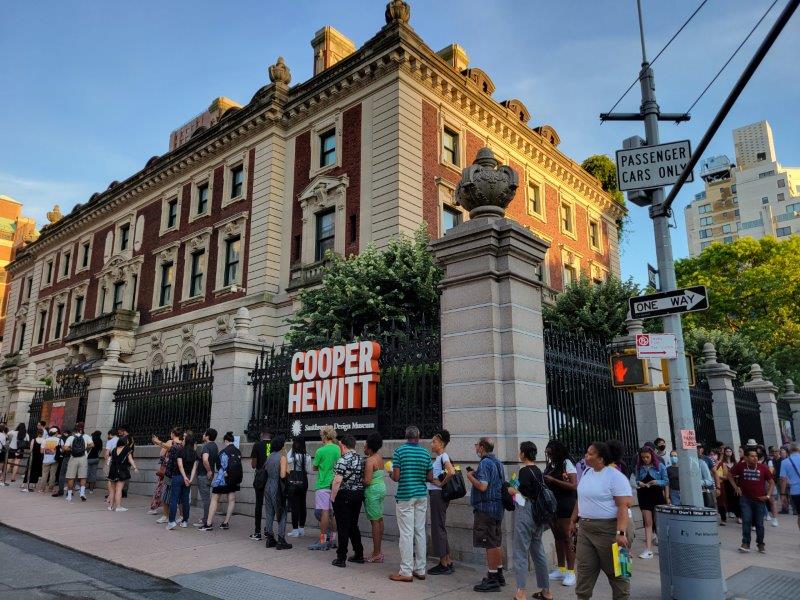
Columbus Circle
Columbus Circle is a traffic circle and heavily trafficked intersection located on the Upper West Side at the intersection of Eighth Avenue, Broadway, Central Park South at West 59th Street, and Central Park West, at the southwest corner of Central Park. Columbus Circle is known for its iconic statue of Christopher Columbus, which was erected in 1892 to commemorate the 400th anniversary of Columbus’s arrival in the Americas. The circle is also home to several cultural institutions, including the Museum of Arts and Design and Jazz at Lincoln Center. In addition to its cultural offerings, Columbus Circle also offers several parks and green spaces, including Central Park, which is located just east of the circle. Columbus Circle is a bustling and vibrant neighborhood that offers a unique blend of cultural institutions, public spaces, and commercial offerings in the heart of Manhattan.
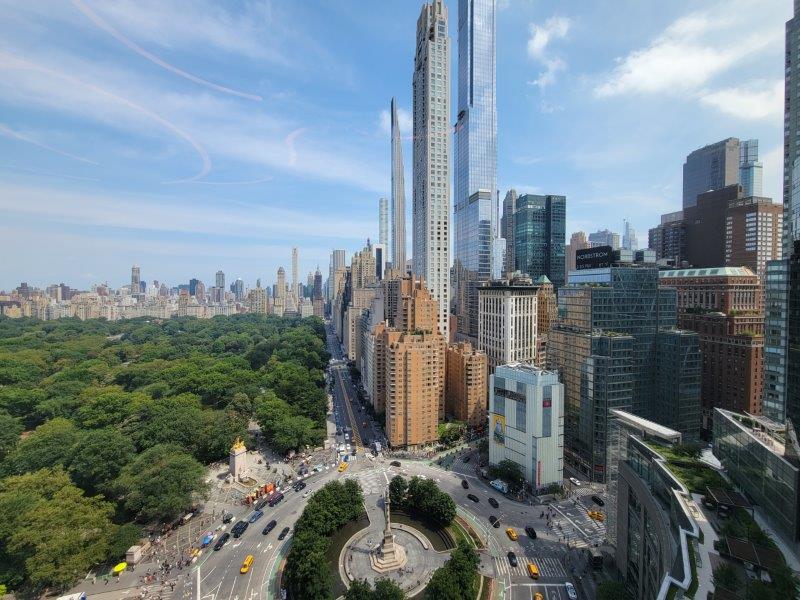
Lenox Hill
Lenox Hill is located on the Upper East Side, and is bounded by East 60th Street to the south, East 77th Street to the north, Lexington Avenue to the west, and the East River to the east. Lenox Hill is known for its mix of residential and commercial buildings, including several iconic landmarks such as the Lenox Hill Hospital, Sloan Kettering and the Frick Collection, which is a museum of art and artifacts located in the former residence of industrialist Henry Clay Frick. In addition to its cultural offerings, Lenox Hill also offers several parks and green spaces along the East River. Lenox Hill is a diverse and vibrant neighborhood that offers a unique blend of residential living, cultural opportunities, and recreational activities in the heart of Manhattan’s Upper East Side.
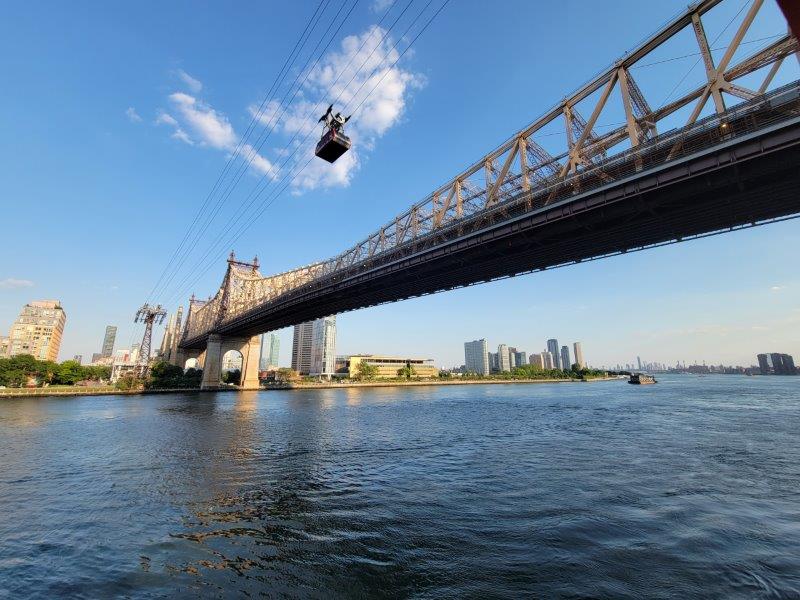
Lincoln Center
Lincoln Center is a neighborhood located in the Upper West Side of Manhattan bounded by West 66th Street to the north, West 62nd Street to the south, Columbus Avenue to the east, and Amsterdam Avenue to the west. Lincoln Center is known for its mix of cultural institutions, landmarks, and residential buildings. The neighborhood is home to several iconic performing arts venues, including the Metropolitan Opera, the New York City Ballet, and the New York Philharmonic, as well as several other cultural institutions, including the Juilliard School, the Film Society of Lincoln Center, and the Lincoln Center Theater. In addition to its cultural attractions, Lincoln Center is also known for its vibrant food and drink scene, with a mix of restaurants, cafes, and bars offering cuisine from around the world. Lincoln Center is especially popular during the summer with the free events they offer.
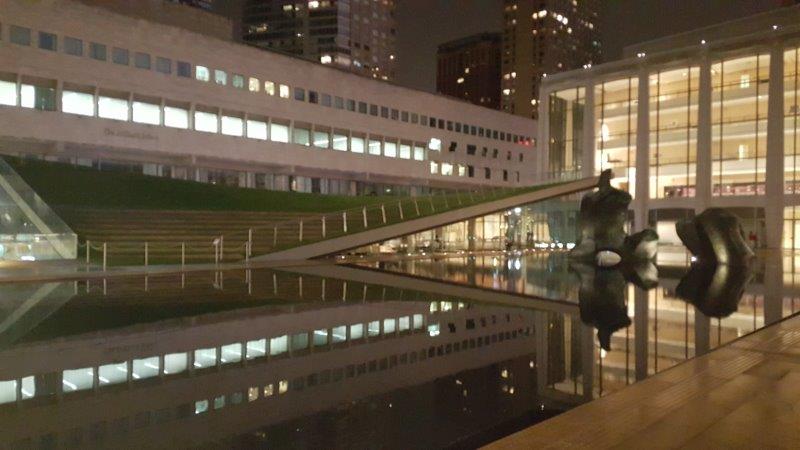
Upper East Side
The Upper East Side is a neighborhood in Upper Manhattan that is bordered by 96th Street to the north, the East River to the east, 59th Street to the south, and Central Park and Fifth Avenue to the west. The area is known for its luxurious apartments, high-end shopping, and world-renowned museums. The neighborhood is home to several iconic landmarks, including the Metropolitan Museum of Art, the Guggenheim Museum, and the Frick Collection. Upper East Side is also a residential neighborhood with many parks and green spaces, including Central Park and Carl Schurz Park.The Upper East Side is also known for its upscale restaurants, designer boutiques, and exclusive social clubs.
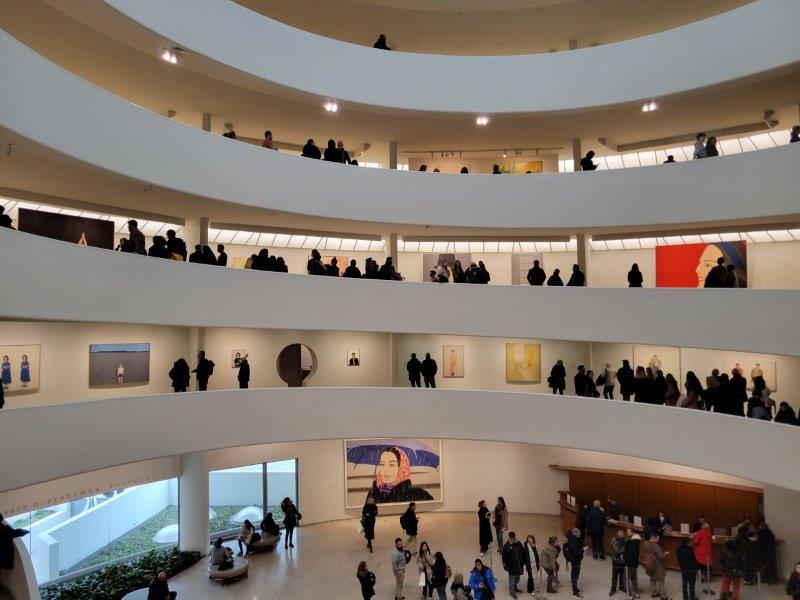
Upper West Side
The Upper West Side is a neighborhood in Upper Manhattan that is bordered by Central Park to the east, the Hudson River to the west, 59th Street to the south, and 110th Street to the north. The area is known for its beautiful architecture, cultural attractions, and affluent residents. The neighborhood is home to several historic landmarks, including the American Museum of Natural History, Lincoln Center for the Performing Arts, Beacon Theater and the Dakota Building which is best known as the building where John Lennon lived. Upper West Side is also a residential neighborhood with many parks and green spaces, including Riverside Park and Central Park. The Upper West Side is characterized by its tree-lined streets, and diverse mix of restaurants, bars, and shops, and is known for its lively street life.
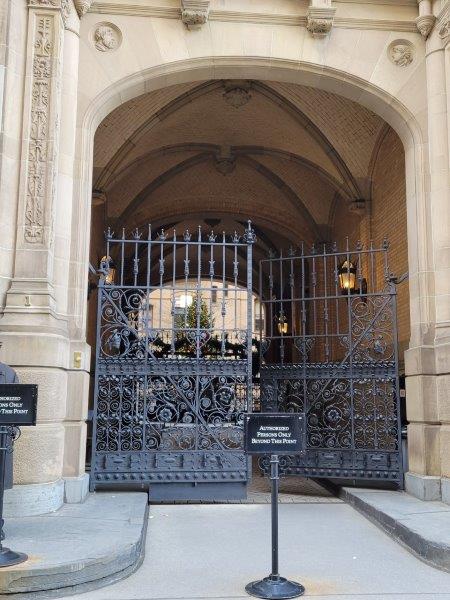
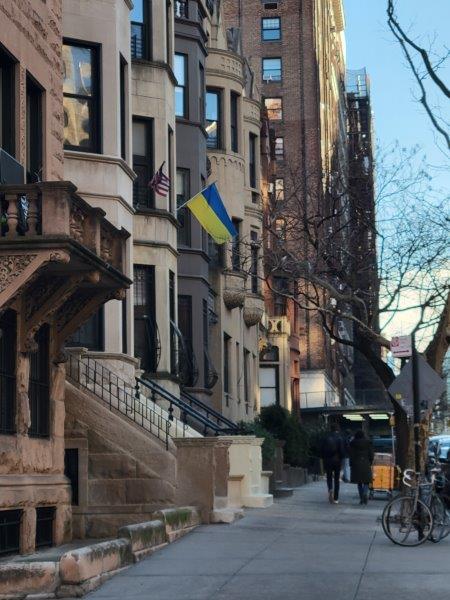
Yorkville
Yorkville is located on the Upper East Side, and is bounded by East 79th Street to the south, East 96th Street to the north, Third Avenue to the west, and the East River to the east. Yorkville is known for its mix of residential and commercial buildings, including several iconic landmarks such as Gracie Mansion, which is the official residence of the Mayor of New York City, and the 92nd Street Y, which is a cultural and community center that offers a wide range of programs and events. In addition to its cultural offerings, Yorkville also offers several parks and green spaces, including Carl Schurz Park, which is located just east of the neighborhood and offers several recreational activities and public events throughout the year. Yorkville is a diverse and vibrant neighborhood that offers a unique blend of residential living, cultural opportunities, and recreational activities in the heart of Manhattan’s Upper East Side.
Midtown Manhattan Neighborhoods
Midtown Manhattan is a bustling commercial and tourist hub located between 34th Street and 59th Street. It is home to some of the most iconic landmarks in New York City, including Times Square, the Empire State Building, and the Rockefeller Center. Midtown Manhattan is divided into several neighborhoods, each with its own unique character and attractions.
Chelsea New York
Chelsea is a trendy neighborhood located on the west side of Midtown Manhattan bounded by 14th Street to the south, 34th Street to the north, the Hudson River to the west, and Sixth Avenue to the east. The neighborhood is known for its vibrant art scene, with many galleries and studios located in the area, as well as high-end boutiques, and trendy restaurants. Chelsea is also a residential neighborhood with many parks and green spaces, including the High Line, a public park built on a former elevated railroad track. Visitors to Chelsea can enjoy a stroll along the High Line or visit the Chelsea Market, a popular food hall that features a variety of local vendors, including some of the best restaurants in the City. The neighborhood has a diverse mix of restaurants, bars, and shops, including the famous Chelsea Hotel, and is known for its trendy and upscale atmosphere.
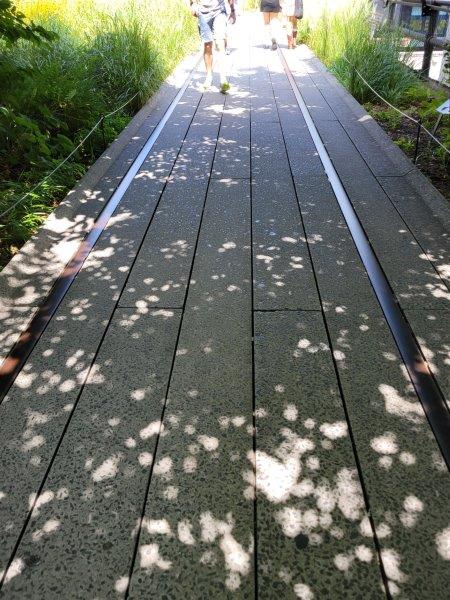

Diamond District
The Diamond District is located in Midtown Manhattan and is the stretch on 47th Street between Fifth Avenue to the west and Sixth Avenue to the east. The Diamond District is known for its concentration of jewelry stores and diamond dealers. It is considered to be the largest diamond district in the world and is a major center for the diamond and jewelry trade, with over 4,000 businesses operating in the area.
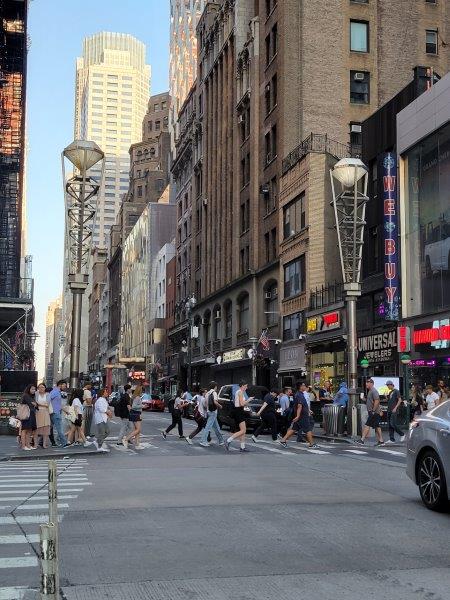
Garment District or Fashion District
The Garment District, also known as the Garment Center or the Fashion District, is a neighborhood in Midtown West bounded by Fifth Avenue to the east, Ninth Avenue to the west, 34th Street to the south, and 42nd Street to the north. The Garment District is a primarily commercial neighborhood that is home to many of the city’s fashion industry businesses. The neighborhood is historically known for its role in the production and manufacturing of clothing, and it is still the epicenter of American fashion. The Garment District is also home to many showrooms, design studios, and fashion schools. The neighborhood has a mix of residential and commercial spaces, with many restaurants, bars, and shops.

Hell’s Kitchen
Hell’s Kitchen, also known as Clinton, is a neighborhood in Midtown West in New York City. It is bounded by 34th Street to the south, 59th Street to the north, Eighth Avenue to the east, and the Hudson River to the west. Hell’s Kitchen is a diverse neighborhood located on the west side of Midtown Manhattan. It is known for its vibrant nightlife and eclectic dining scene, with a variety of ethnic cuisines represented, and especially Restaurant Row which is on 46th Street between 8th and 9th Avenue. Restaurant Row is home to a wide varierty of restaurants, some dating back a 100 years, and frequented by New Yorkers and tourists alike. Hell’s Kitchen is also home to many theaters, including the famous Broadway theaters located in the Theater District.
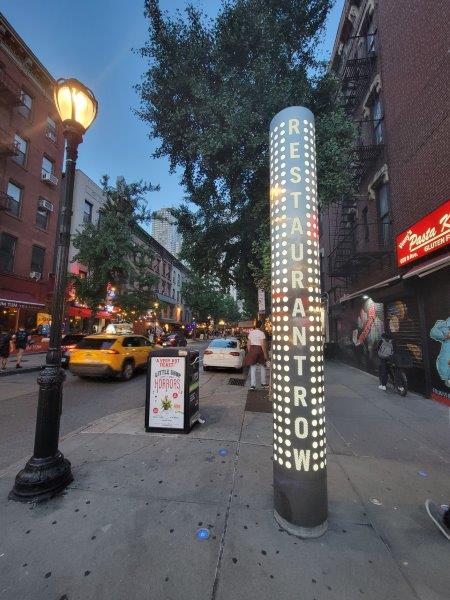
Herald Square
Herald Square is a major commercial and transportation hub located in Midtown West formed by the intersection of Broadway, Sixth Avenue (Avenue of the Americas), and 34th Street. The neighborhood is named after the now-defunct New York Herald newspaper, which was formerly headquartered there. Herald Square is home to many major department stores, including Macy’s flagship store, as well as many other retail stores, restaurants, and hotels. The neighborhood is also a major transportation hub, with several subway lines and bus routes passing through the area. Herald Square is a popular destination for both tourists and locals, and it is known for its lively atmosphere and holiday traditions, such as the Macy’s Thanksgiving Day Parade.
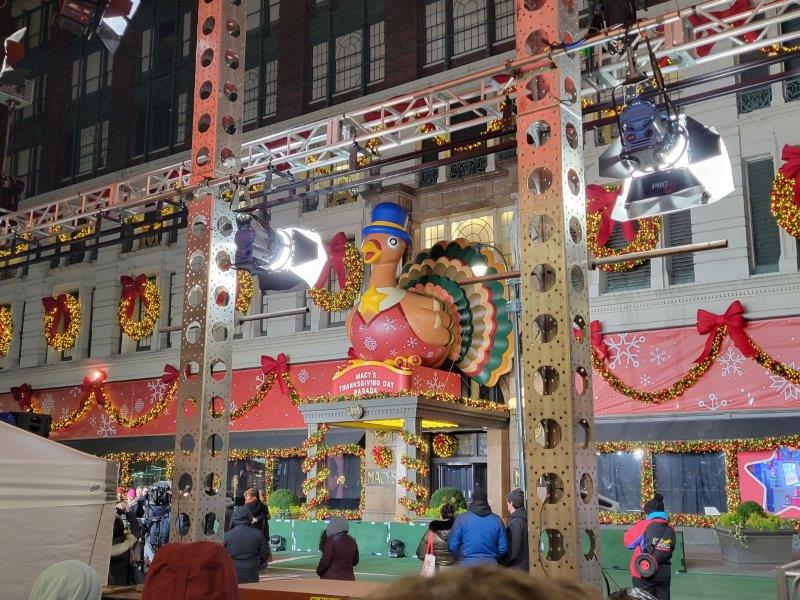
Hudson Yards
Hudson Yards is a new development located in Midtown West located between 30th and 34th Streets and 10th and 12th Avenues. It is the largest private real estate development in the United States, with over 18 million square feet of commercial and residential space. It features luxury shopping, dining, and entertainment options, as well as the Vessel, a unique public art installation that used to be accessible for visitors to climb, but is now only available for visitors to walk through at the ground level. Visitors to Hudson Yards can enjoy a meal at one of the many high-end restaurants or take in the views from the observation deck at the Edge. The neighborhood is known for its modern architecture, public spaces, and luxury amenities, including high-end retail stores, restaurants, and hotels. Hudson Yards is also home to cultural institutions such as The Shed, an arts center that presents a wide range of performances and exhibitions.
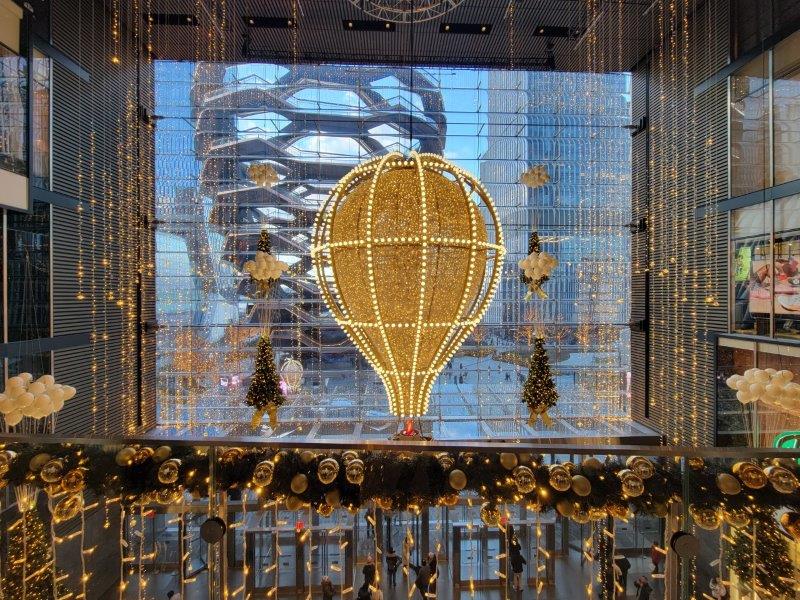
Kips Bay
Kips Bay is a neighborhood located in Midtown East. It lies between East 34th Street to the north, the East River to the east, East 27th and/or 23rd Streets to the south, and Third Avenue to the west. The neighborhood is primarily residential, with a mix of high-rise and low-rise apartment buildings, townhouses, and brownstones. Kips Bay is also home to several medical institutions, including the NYU Langone Medical Center and the Bellevue Hospital Center. The neighborhood has a mix of restaurants, bars, and shops, and it is known for its quiet, laid-back atmosphere.
Korea Town
Koreatown (K-Town) is a neighborhood located in Midtown Manhattan, and is centered on West 32nd Street between Fifth Avenue and Broadway, and extends to Sixth Avenue to the east and to 30th and 36th Streets to the north and south. Koreatown is known for its vibrant atmosphere, Korean restaurants, karaoke bars, and shops selling Korean beauty products, fashion, and K-pop merchandise. The neighborhood is also home to several cultural institutions, including the Korea Society and the Korean Cultural Center New York. Koreatown also includes Greeley Square, which is located at the intersection of Broadway and Sixth Avenue and offers a public plaza.
Midtown East
Midtown East is a neighborhood bounded by 59th Street to the north, 42nd Street to the south, the East River to the east, and Fifth Avenue to the west. Midtown East is a primarily commercial neighborhood that is home to many of the city’s major corporations and financial institutions. It is also home to some of the city’s most iconic landmarks, including Grand Central, St Patrick’s Church, Chrysler Building and the United Nations Headquarters. Midtown East offers shopping at high-end boutiques or dining at some of the city’s best restaurants. The neighborhood has a mix of residential and commercial spaces, with many restaurants, bars, and shops.
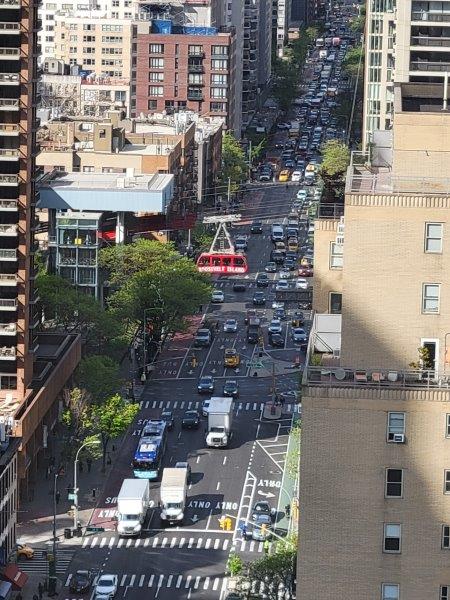
Midtown West
Midtown West is bounded by 59th Street to the north, 34th Street to the south, the Hudson River to the west, and Fifth Avenue to the east. Midtown West is a bustling neighborhood that is home to some of the city’s most popular tourist attractions, including Times Square and the Theater District. It is also home to the Hudson Yards development, which features luxury shopping, dining, and entertainment options. The neighborhood is known for its commercial and business district, which includes many skyscrapers, corporate headquarters, and tourist attractions. Midtown West is also home to many cultural institutions, including the Museum of Modern Art (MoMA) and Radio City Music Hall. The neighborhood has a mix of residential and commercial spaces, with many restaurants, bars, and shops.
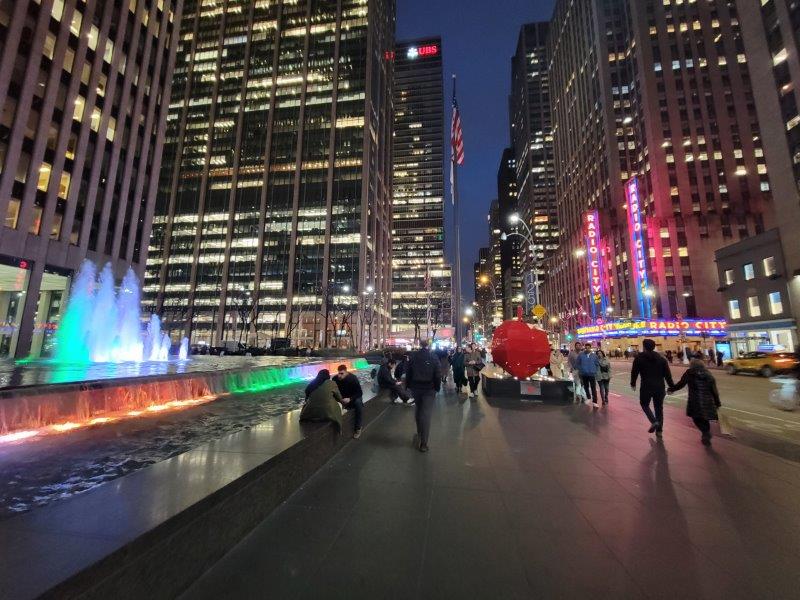
Midtown South
Midtown South is considered a macro neighborhood, and lies below Midtown East and Midtown West, roughly between 29th Street to the south, 42nd Street to the North, Ninth Avenue to the west and Lexington Avenue to the East. It is a mix of commercial and residential buildings, and is well known for iconic landmarks such as the Empire State Building, Penn Station, and Madison Square Garden. In addition to its cultural offerings, Midtown South also offers several parks and green spaces, including Bryant Park, which is located just west of the neighborhood and offers several recreational activities and public events throughout the year.

Murray Hill
Murray Hill is a primarily residential neighborhood located on the east side of Midtown Manhattan. It is known for its historic architecture and quiet streets. Visitors to Murray Hill can enjoy a stroll through the neighborhood’s many parks or visit the Morgan Library & Museum, a popular cultural institution. Murray Hill is located in Midtown East, and lies between East 34th Street to the south, East 42nd Street to the north, Madison Avenue to the west, and the East River to the east. The neighborhood is primarily residential, with a mix of high-rise and low-rise apartment buildings, townhouses, and brownstones. Murray Hill is also home to several cultural institutions, including the Morgan Library and Museum and the Scandinavia House. The neighborhood has a mix of restaurants, bars, and shops, and it is known for its laid-back atmosphere.

Rockefeller Center
Rockefeller Center is located in Midtown West, and is a complex of 19 commercial buildings covering 22 acres between Fifth Avenue to the east, Sixth Avenue to the west, West 48th Street to the south, and West 51st Street to the north. Rockefeller Center is known for its iconic landmarks, including the Rockefeller Plaza, which is a popular tourist destination and home to several famous attractions, such as the Top of the Rock observation deck, the NBC Studios, and the famous ice skating rink during the winter season, and roller skating during the summer. The complex also features several public art installations and sculptures, including the famous Prometheus statue. In addition to its cultural attractions, Rockefeller Center is also home to several businesses, including offices for major corporations, retail stores, and restaurants.
Rose Hill
Rose Hill is located on the east side of Manhattan, and is bounded by 25th Street to the south, 30th Street to the north, Madison Avenue to the west, and Third Avenue to the east. Rose Hill is primarily a residential neighborhood and is known for its mix of pre-war apartment buildings, townhouses, and high-rise condominiums. The neighborhood is also home to several cultural institutions, including the Morgan Library & Museum and the Scandinavia House, which offers cultural programming and events related to Nordic culture. In addition to its cultural offerings, Rose Hill also offers several parks and green spaces, including Madison Square Park, which is located just west of the neighborhood and offers several recreational activities and public art installations.
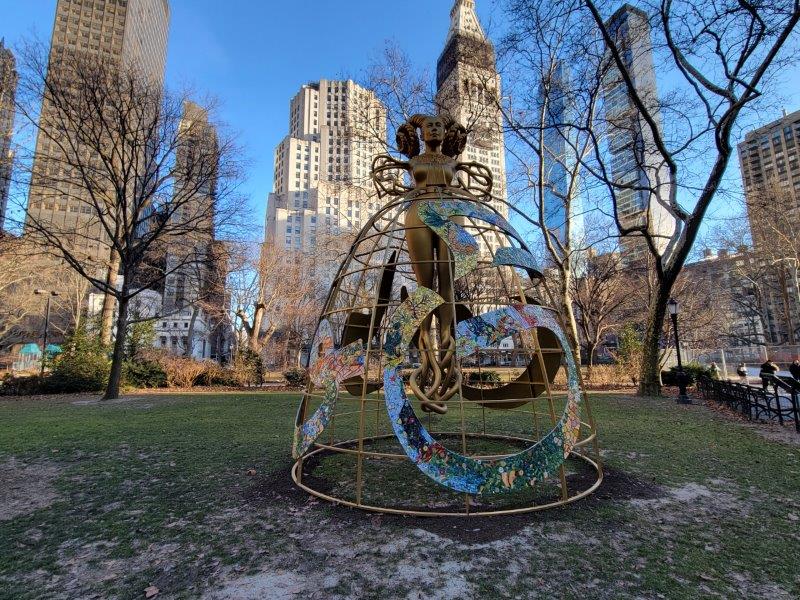
Sutton Place
Sutton Place is a small, affluent neighborhood located in Midtown East. It lies between East 53rd and/or 59th Streets to the north, the East River to the east, Sutton Place South to the south, and First Avenue to the west. The neighborhood is known for its quiet, residential streets and upscale homes, including many co-ops, brownstones, and townhouses. Sutton Place is also home to several high-profile residents, including wealthy socialites and world leaders. The neighborhood has a mix of restaurants, bars, and shops, and it is known for its tranquil atmosphere.
Theater District
The Theater District is a neighborhood located in Midtown West, and is bounded by West 40th Street to the south, West 54th Street to the north, Sixth Avenue to the east, and Eighth Avenue to the west. The Theater District is known for its concentration of Broadway theaters, which host some of the most popular and iconic shows in the world. In addition to its cultural offerings, the Theater District also offers several parks and green spaces, including Times Square, which is located at the intersection of Broadway and Seventh Avenue and is known for its bright lights, billboards, and public events.

Times Square
Times Square is a major commercial intersection, tourist destination, entertainment hub, and neighborhood in Midtown West formed by the junction of Broadway, Seventh Avenue, and 42nd Street. Also known as the crossroads of the world, Times Square is known for its bright lights, billboards, and bustling atmosphere. It is home to many theaters, including the famous Broadway theaters located along West 42nd Street, as well as many restaurants, bars, and shops. Times Square is also a major transportation hub, with several subway lines and bus routes passing through the area. Despite its reputation as a tourist hotspot, the Times Square neighborhood is also home to many residents, with a mix of luxury high-rises and historic buildings. Times Square is best known for its iconic New Year’s Eve ball drop that people come from all over the world to bring the new year in with.
Turtle Bay
Turtle Bay is located in Midtown East, and is bounded by 42nd Street to the south, 53rd Street to the north, Lexington Avenue to the west, and the East River to the east. Turtle Bay is known for its mix of residential and commercial buildings, including several iconic landmarks such as the United Nations Headquarters, which is located on the eastern side of the neighborhood, and the Chrysler Building, which is located on the western side. The neighborhood is also home to several parks and green spaces, including Dag Hammarskjold Plaza, Katherine Hepburn Garden and Turtle Bay Gardens.
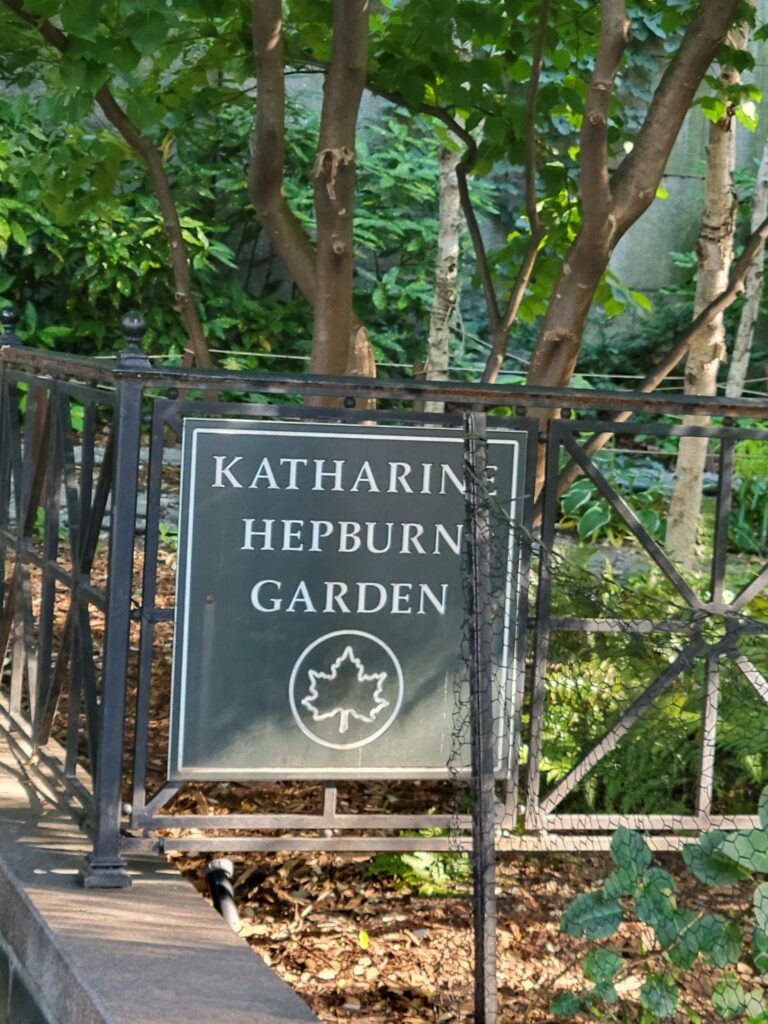

Downtown Manhattan Neighborhoods
Lower Manhattan is the southernmost part of Manhattan, and it is home to some of the most iconic neighborhoods in the city. This section covers the most popular neighborhoods in Lower Manhattan.
Alphabet City
Alphabet City is a neighborhood located within the East Village. Its name comes from Avenues A, B, C, and D, the only avenues in Manhattan to have single-letter names. Alphabet City is bounded by Houston Street to the south and 14th Street to the north, and extends roughly from Avenue A to the East River. The neighborhood has a mix of restaurants, bars, and shops, and it is known for its arts and culture scene. Some famous landmarks in Alphabet City include Tompkins Square Park and the Nuyorican Poets Cafe. The neighborhood is known for its diverse community and affordable housing, as well as its trendy restaurants and bars.
Battery Park City
Battery Park City is a planned community in Lower Manhattan that is known for its waterfront views and green spaces. Battery Park City is a mainly residential neighborhood located on the southwestern tip of Manhattan, and is bounded by the Hudson River to the west, West Street to the east, Battery Park to the south, and Chambers Street to the north. The neighborhood was built on landfill in the 1970s and 1980s, and it is known for its modern architecture and waterfront views. Battery Park City is home to several cultural institutions, including the Museum of Jewish Heritage and the Poets House. The neighborhood has a mix of restaurants, cafes, and shops, and it is known for its peaceful and family-friendly atmosphere.
Bowery
Bowery is a historic neighborhood in Lower Manhattan that. The neighborhood is home to a variety of shops, restaurants, and bars, as well as some of the city’s most famous landmarks, including the Bowery Ballroom and the New Museum.
The Bowery is a street and neighborhood located in Lower Manhattan, roughly bounded by Canal Street to the south, East Houston Street to the north, Allen Street to the east, and Bowery to the west. The street is known for its music venues and art galleries, and has a long and varied history. It is known for its role in the development of American popular culture, including music, theater, and art. The Bowery is home to several cultural institutions, including the New Museum and the Bowery Ballroom. The neighborhood has a mix of residential and commercial buildings, and it is known for its gritty and eclectic atmosphere.
Chinatown
Chinatown is a vibrant neighborhood in Lower Manhattan that is known for its bustling streets and delicious food bounded by Worth Street to the north, Grand Street to the south, Allen Street to the east, and Broadway to the west. The neighborhood is home to a variety of shops and restaurants, as well as some of the city’s most famous landmarks, including the Mahayana Buddhist Temple and the Museum of Chinese in America. The neighborhood is known for its vibrant Chinese culture, including its food, shops, and festivals. The neighborhood has a mix of restaurants, markets, and shops, and it is known for its bustling and lively atmosphere.
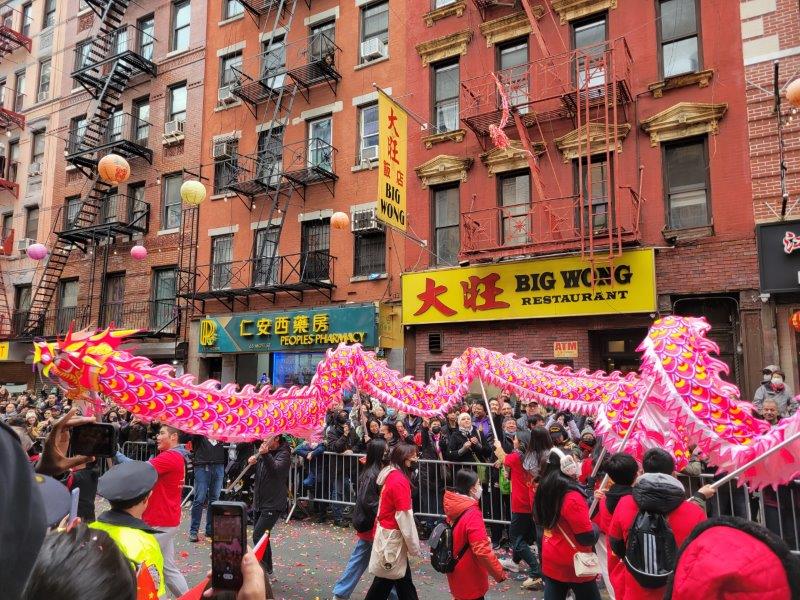

Civic Center
Civic Center is located in Lower Manhattan, and is bounded by Broadway to the west, Chinatown to the north, the East River and the Brooklyn Bridge to the east, and the Financial District to the south. Civic Center is known for its mix of government and administration buildings, including New York City Hall, One Police Plaza, and several courthouses in Foley Square. The neighborhood is also home to several cultural institutions, including the African Burial Ground National Monument and the Museum of Jewish Heritage. In addition to its government and cultural institutions, Civic Center is also home to several parks and green spaces, including City Hall Park and Thomas Paine Park.
East Village
East Village is a diverse neighborhood in Lower Manhattan that is known for its artistic community and nightlife. It is bounded by 14th Street to the north, Houston Street to the south, the East River to the east, and Fourth Avenue to the west. The neighborhood is home to a variety of shops, restaurants, and bars, as well as some of the city’s most famous landmarks, including Tompkins Square Park which hosts the Charlie Parker Jazz Festival every year, the New York Theatre Workshop and the Anthology Film Archives. The neighborhood has a mix of restaurants, bars, and shops, and it is known for its bohemian and eclectic atmosphere.
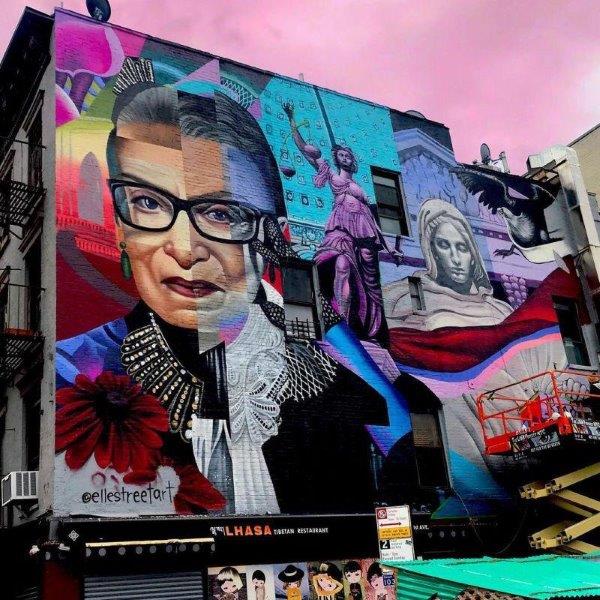
Financial District
The Financial District, also known as FiDi, is a bustling neighborhood in Lower Manhattan that is known for its skyscrapers and financial institutions, and is bounded by Chambers Street to the north, the East River to the east, Battery Park to the south, and West Street to the west. The neighborhood is home to the New York Stock Exchange and the Federal Reserve Bank of New York, as well as a variety of shops and restaurants. The neighborhood is known for its role as the financial capital of the United States, including the New York Stock Exchange and the Federal Reserve Bank of New York. The Financial District is also home to several cultural institutions, including the National Museum of the American Indian and the Skyscraper Museum. It is also the location of the World Trade Center. The neighborhood has a mix of restaurants, cafes, and shops, and it is known for its bustling and fast-paced atmosphere during the day, though it can be relatively quiet at night compared to the rest of Manhattan.
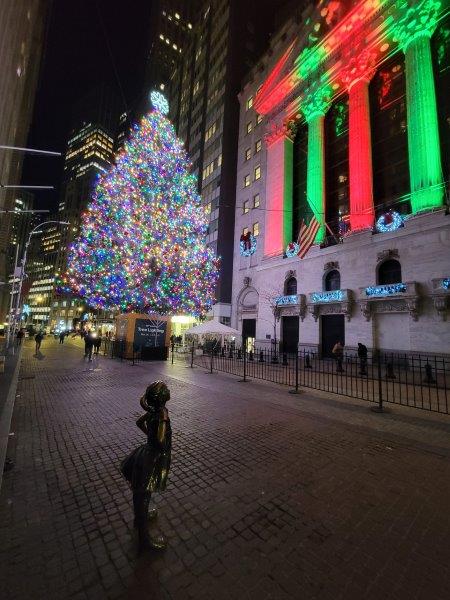
Flatiron
Flatiron is a neighborhood in Lower Manhattan that is named after the iconic Flatiron Building. The neighborhood is known for its historic architecture, as well as its trendy restaurants and shops. Flatiron is a popular destination for foodies, and it is home to some of the best restaurants in the city. Flatiron is located in the heart of Manhattan, and named after the iconic Flatiron Building which is located at the intersection of Broadway, Fifth Avenue, and East 23rd Street. The neighborhood is bounded roughly by 20th Street to the south, 26th Street to the north, Sixth Avenue (Avenue of the Americas) to the west, and Park Avenue South to the east. Flatiron is known for its historic architecture, including many cast-iron buildings, as well as its vibrant food and shopping scenes. The neighborhood is home to several cultural institutions, including the Museum of Sex and the National Museum of Mathematics.
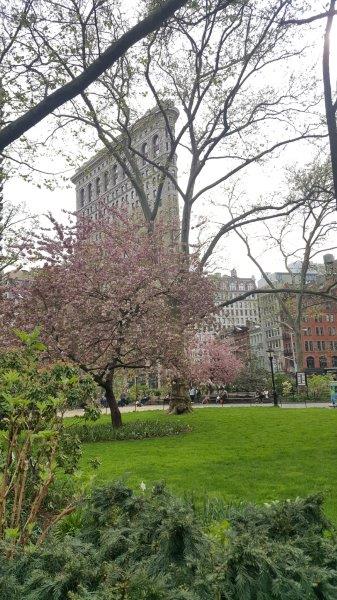
Gramercy
Gramercy is a historic neighborhood in Lower Manhattan that is known for its beautiful architecture and quiet streets bounded by 14th Street to the south, 23rd Street to the north, Park Avenue South to the west, and First Avenue to the east The neighborhood is known for its historic architecture, including many brownstones and townhouses, as well as its quiet and residential atmosphere. Gramercy is home to several cultural institutions, including the Players Club and the Gramercy Theatre. The neighborhood has a mix of restaurants, cafes, and shops, and it is known for its upscale and refined atmosphere. Gramercy Park is only accessible by residents, and is open to the public for one hour a year on Christmas Eve.
Greenwich Village
Greenwich Village is a historic neighborhood in Lower Manhattan that is known for its bohemian vibe and artistic community. It lies between 14th Street to the north, Broadway to the east, Houston Street to the south, and the Hudson River to the west. Greenwich Village is known for its historic architecture, including many brownstones and townhouses, as well as its vibrant arts and culture scene. Greenwich Village is home to several cultural institutions, including the Stonewall National Monument, the Washington Square Park, and the New York University. The neighborhood has a mix of restaurants, bars, and shops, and it is known for its lively and bohemian atmosphere.
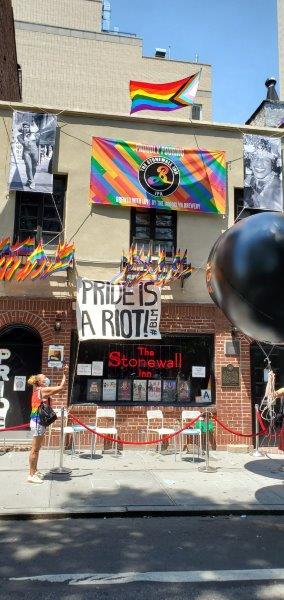
The West Village and Greenwich Village are often used interchangeably to refer to the same area in Manhattan. The West Village is the western portion of Greenwich Village, which is a larger neighborhood that extends further east. However, some sources suggest that the West Village is a more upscale and residential area, while Greenwich Village is known for its bohemian and counterculture roots. Ultimately, the distinction between the two neighborhoods can be somewhat fluid and depends on who you ask.
Hudson Square
Hudson Square is located in Lower Manhattan, and is bounded by West Houston Street to the north, Canal Street to the south, Sixth Avenue to the east, and the Hudson River to the west. Hudson Square is known for its mix of residential and commercial buildings, including several historic buildings that were once used for printing and publishing. The neighborhood is also home to several cultural institutions, including the New York City Fire Museum and the Soho Photo Gallery. In addition to its cultural institutions, Hudson Square is also home to several parks and green spaces, including Freeman Plaza West and the Hudson River Park, which offers stunning views of the river and several recreational activities.
Little Italy
Little Italy is a historic neighborhood in Lower Manhattan that is known for its Italian-American community and delicious food. It is bounded by Canal Street to the south, Bowery to the east, Broome Street to the north, and Lafayette Street to the west. The neighborhood is known for its Italian-American heritage, including its food, shops, and festivals, and it has historically been home to many Italian immigrants. The neighborhood is home to a variety of shops and restaurants, as well as some of the city’s most famous landmarks, including the Church of the Most Precious Blood and the Feast of San Gennaro. The neighborhood has a mix of restaurants, cafes, and shops, and it is known for its lively and colorful atmosphere.

Lower East Side
The Lower East Side is a neighborhood located in the southeastern part of Manhattan, bounded by the Bowery to the west, East River to the east, Canal Street to the south, and Houston Street to the north. The neighborhood has a rich history and is known for its diverse community, vibrant arts and culture scene, and its mix of historic and modern architecture. The Lower East Side is home to several cultural institutions, including the Tenement Museum and the New Museum. The neighborhood has a mix of restaurants, bars, and shops, and it is known for its bohemian and eclectic atmosphere.
The Meatpacking District
The Meatpacking District is a neighborhood located in the West Village area, and is bounded by West 14th Street to the north, Gansevoort Street to the south, Hudson Street to the east, and the Hudson River to the west. The Meatpacking District is known for its mix of historic and modern architecture, as well as its vibrant nightlife, high-end shopping, and trendy restaurants and bars. The neighborhood was once a center for meatpacking and food processing, but has since been transformed into a fashionable district with a mix of residential and commercial buildings. In addition to its nightlife and dining scene, the Meatpacking District is also home to several cultural institutions and landmarks, including the Whitney Museum of American Art, which is a museum dedicated to American art, and the High Line, which is an elevated park that offers stunning views of the city, and the Standard Hotel.
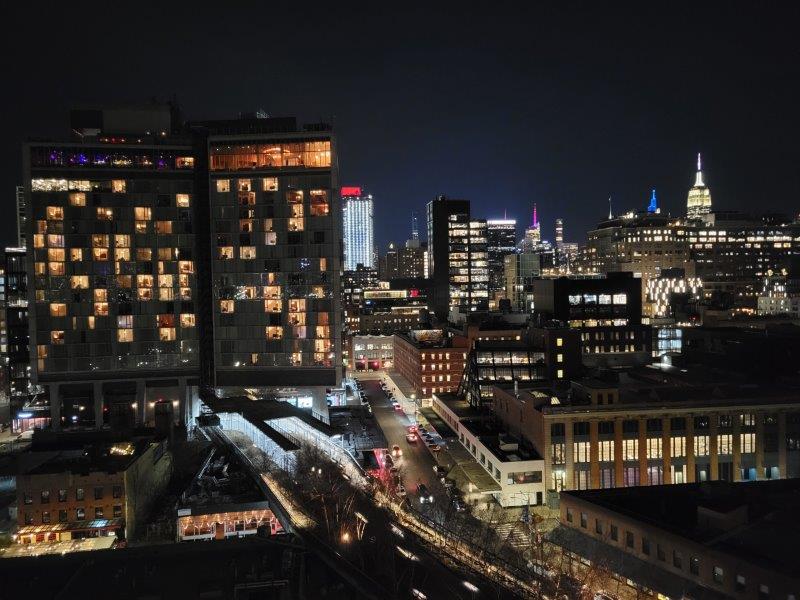
Noho
Noho, short for “North of Houston Street” (as contrasted with SoHo), is a primarily residential neighborhood in Lower Manhattan in the New York City borough of Manhattan. It is bounded by Mercer Street to the west and the Bowery to the east, and from East 9th Street in the north to East Houston Street in the south. The neighborhood is known for its eclectic sensibility and bohemian spirit, with expansive lofts, chic boutiques, and quaint cafes.
Nolita
Nolita is located in the center of downtown Manhattan and is surrounded by other famous neighborhoods like Soho, Little Italy, Chinatown, the Lower East Side, and the East Village. Nolita is short for “North of Little Italy” and is known for its stylish boutiques, cozy coffee shops, and charming eateries.
Nomad
NoMad, short for North of Madison Square Park, is a neighborhood located in the central part of Manhattan, bordered East 25th Street to the south, East 29th Street to the north, Madison Avenue to the east, and Sixth Avenue to the west. NoMad is known for its mix of historic and modern architecture, as well as its vibrant food and drink scene. The neighborhood is home to several iconic landmarks, including the Flatiron Building, which is a triangular-shaped building that is one of the most photographed buildings in New York City, and the Ace Hotel, which is a historic hotel that has been transformed into a trendy cultural hub. In addition to its cultural attractions, NoMad is also known for its vibrant food and drink scene, with a mix of restaurants, cafes, and bars offering global cuisines.
Peter Cooper Village
Peter Cooper Village is a private residential development located in the eastern part of Manhattan bounded by 20th Street to the south, 23rd Street to the north, Avenue C to the east, and First Avenue to the west. The development was built in the aftermath of World War II, and it is known for its large green spaces, playgrounds, and community amenities. Peter Cooper Village is home to several cultural institutions, including the Peter Cooper Village Community Center and the Oval Lawn. Peter Cooper Village has around 56 buildings and 5,000 apartments. It is adjacent to Stuyvesant, which is another private residential development.
Seaport District
The Seaport District located on the East River and bounded roughly by Fulton Street to the north, South Street to the east, the Brooklyn Bridge to the south, and Broadway to the west. The neighborhood is known for its historic architecture, cobblestone streets, and waterfront views. It is home to many restaurants, bars, and shops, as well as the South Street Seaport Museum, which showcases the area’s maritime history. In recent years, the Seaport District has undergone significant development, including the opening of Pier 17, a new shopping and entertainment complex with restaurants, bars, and a rooftop concert venue.
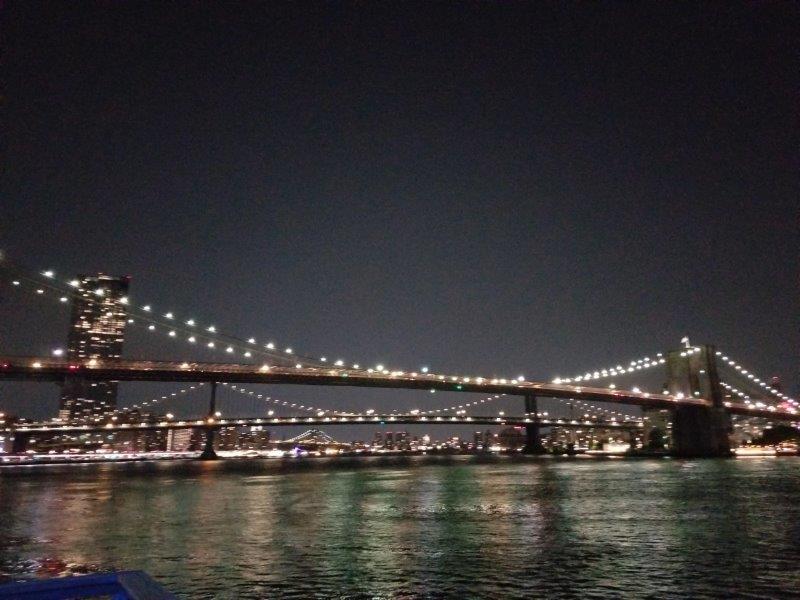
Soho
Soho, short for “South of Houston Street,” is a trendy neighborhood in Lower Manhattan that is known for its high-end shopping and chic restaurants. It is bounded by Houston Street to the north, Canal Street to the south, Lafayette Street to the east, and West Broadway to the west. The neighborhood is home to a variety of designer boutiques, as well as some of the city’s best art galleries. Soho is also known for its cast-iron architecture and cobblestone streets, which is a hallmark of the neighborhood.
Stuyvesant Town
Stuyvesant Town is a planned community in Lower Manhattan that is known for its affordable housing and green spaces bounded by 14th Street to the south, 20th Street to the north, Avenue C to the east, and First Avenue to the west. The development was built in the aftermath of World War II, and it is known for its large green spaces, playgrounds, and community amenities. Stuyvesant Town is home to several cultural institutions, including the Stuyvesant Cove Park and the Oval Lawn. The neighborhood has a mix of restaurants, cafes, and shops, and it is known for its family-friendly atmosphere. Stuyvesant Town has over 110 residential buildings and 11,000 apartments, and is home to a variety of shops and restaurants. It is adjacent to Peter Cooper Village, which is another private residential development.
Tribeca
Tribeca is a trendy neighborhood in Lower Manhattan that is known for its loft apartments and upscale restaurants. The neighborhood’s name is a syllabic abbreviation of “Triangle Below Canal Street.” It is bounded by Canal Street to the north, West Street to the west, Broadway to the east, and Vesey Street to the south. Tribeca is known for its historic architecture, including many cast-iron buildings, as well as its art galleries, restaurants, and high-end boutiques The neighborhood is home to some of the city’s most famous landmarks, including the Tribeca Film Festival and the New York Academy of Art.The neighborhood has a mix of residential and commercial buildings, and it is known for its trendy and upscale atmosphere.
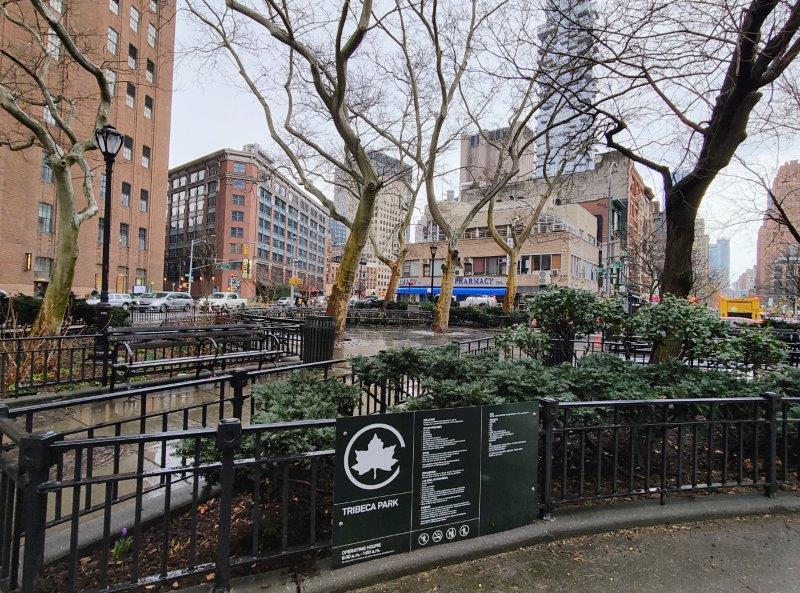
Two Bridges
Two Bridges is located at the southern end of the Lower East Side and Chinatown on the East River waterfront, near the footings of Brooklyn Bridge and of Manhattan Bridge. The neighborhood has been a gateway for immigrants arriving in New York City, with waves of different ethnic groups settling in the area. Today, it is known for its mix of residential buildings, bustling streets, and a lively street food scene.
Union Square
Union Square is a vibrant area in Lower Manhattan that is home to the famous Union Square Park. The park is a popular destination for locals and tourists alike, and it is surrounded by a variety of shops, restaurants, and cafes. Union Square is also known for its farmers’ market, which is held four days a week and features fresh produce and other local goods. Union Square is a historic intersection and surrounding neighborhood in Manhattan, New York City, located where Broadway and the former Bowery Road – now Fourth Avenue – came together in the early 19th century. The neighborhood is known for its public park, which features a greenmarket where visitors can sample goods from local farmers. Union Square is also home to several cultural institutions, including the Union Square Theatre and the New York Film Academy. The neighborhood has a mix of residential and commercial spaces, with many restaurants, bars, and shops, and it is known for its lively atmosphere.

Washington Square Village
Washington Square Village is an apartment complex located in Greenwich Village and is bounded by West 3rd Street to the north, Bleecker Street to the south, LaGuardia Place to the east, and Mercer Street to the west. Washington Square Village was developed in the 1950s by the architect I.M. Pei and offers spacious apartments, 24/7 doorman services, and an excellent location in the heart of Greenwich Village. The complex is also home to a popular playground and garden area located in the interior courtyard. Washington Square Village is a popular destination for students and faculty of New York University, which owns and operates the complex, as well as for residents of the surrounding Greenwich Village neighborhood.
West Village
The West Village is a neighborhood located in the western section of Greenwich Village, bounded by the Hudson River to the west, West 14th Street to the north, Greenwich Avenue to the east, and Christopher Street to the south. The neighborhood is known for its historic architecture, including many brownstones and townhouses, as well as its vibrant arts and culture scene. The West Village is home to several cultural institutions, including the Stonewall National Monument, the Whitney Museum of American Art, and the Cherry Lane Theatre. The neighborhood has a mix of restaurants, bars, and shops, and it is known for its trendy and bohemian atmosphere.
The West Village and Greenwich Village are often used interchangeably to refer to the same area in Manhattan. The West Village is the western portion of Greenwich Village, which is a larger neighborhood that extends further east. However, some sources suggest that the West Village is a more upscale and residential area, while Greenwich Village is known for its bohemian and counterculture roots. Ultimately, the distinction between the two neighborhoods can be somewhat fluid and depends on who you ask.
Islands that are Part of Manhattan
Manhattan is an island itself, but there are several smaller islands that are also part of the borough. These islands each have their own unique history and character. Here are some of the most notable ones:
Governors Island
Governors Island is a 172-acre island located in New York Harbor approximately 800 yards from Lower Manhattan and even closer to Brooklyn, just a short ferry ride from Lower Manhattan. It was formerly a military base and is now a public park that hosts various events and activities throughout the year, including concerts, art installations, and food festivals. The island is accessible by ferry from Manhattan and Brooklyn. Governors Island has a rich history and is home to several historic buildings and landmarks, including Fort Jay and Castle Williams, which were built in the late 18th and early 19th centuries. The island is also home to several parks and green spaces, including the Hills, a 10-acre park with sweeping views of the harbor and the Statue of Liberty.
In addition to its historic and natural attractions, Governors Island is also home to several cultural institutions and events, including the Governors Island Art Fair and the Jazz Age Lawn Party. The island is also a popular destination for outdoor recreation, including biking, picnicking, and kayaking.
Liberty Island
Liberty Island is located in New York Harbor and is home to the Statue of Liberty, one of the most iconic landmarks in the world. Liberty Island is a federally owned island located in Upper New York Bay in the United States, and is accessible by ferry from Manhattan and New Jersey. The Statue of Liberty was a gift from France to the United States, and was dedicated in 1886. It is a symbol of freedom and democracy, and has become one of the most recognizable landmarks in the world. Visitors to Liberty Island can tour the statue’s pedestal and museum, which features exhibits on the statue’s history and construction, as well as the statue’s original torch. Interestingly, Lady Liberty sways 3 inches in the wind, while its torch sways 6 inches. A fun fact is that more than 300 separate sheets of copper, each hand-hammered over an individual mold, were used to create the Statue’s Figure.
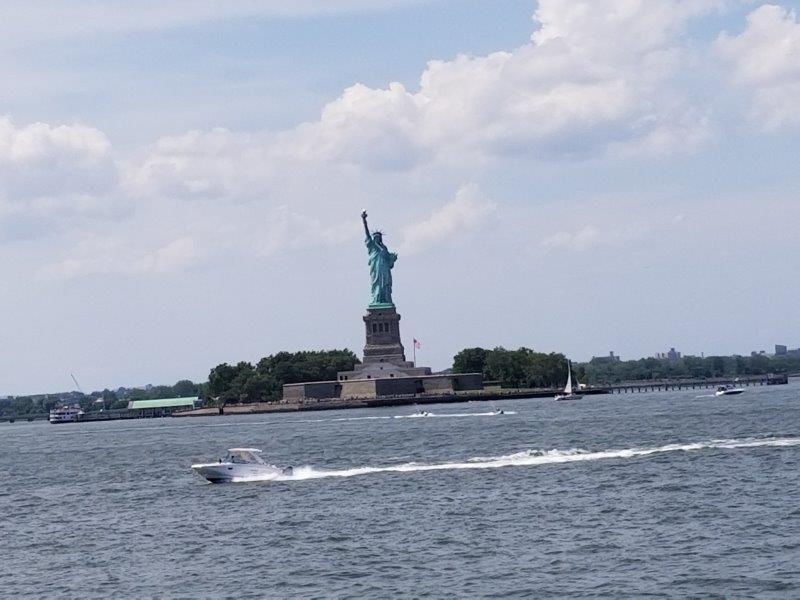
Randall’s Island and Ward Island
Randalls Island and Wards Island are two conjoined islands located in the East River of New York City, between Manhattan, Queens, and the Bronx. They are collectively referred to as Randalls and Wards Islands, and are accessible by bridge from Manhattan and the Bronx. Wards Island is connected to Randall’s Island by a pedestrian bridge. Randalls and Wards Islands have a rich history and have been used for a variety of purposes over the years, including as a site for a boys’ home, a hospital, and a home for civil war veterans. Today, the islands are primarily used as a park and recreation area, with several sports fields, playgrounds, and nature trails. The islands are also home to several cultural institutions and events, including the Frieze New York art fair and the Governors Ball music festival. Randalls and Wards Islands are known for their scenic views of the Manhattan skyline and the East River, as well as their peaceful and quiet atmosphere. The islands are a popular destination for outdoor recreation, including biking, running, and kayaking.
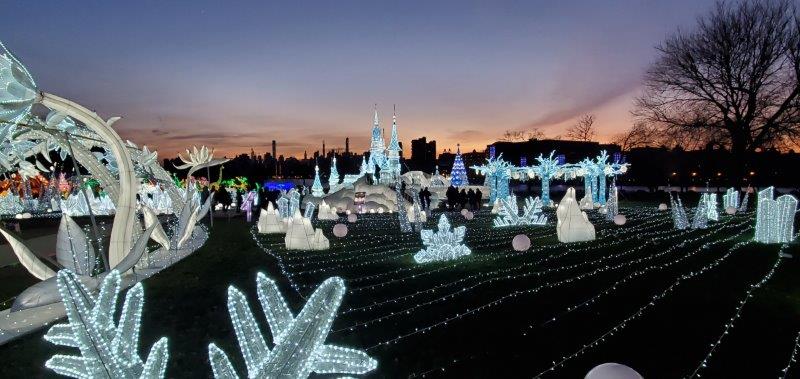
Roosevelt Island
Roosevelt Island is a narrow island located in the East River between Manhattan and Queens in New York City. It is roughly 2 miles long and 800 feet wide at its widest point. The island was named after President Franklin D. Roosevelt in 1971, and was previously known as Welfare Island and Blackwell’s Island. Roosevelt Island is accessible by several modes of transportation, including the Roosevelt Island Tramway, which offers views of the Manhattan skyline and the East River, as well as by subway and bus. The island is home to several parks and landmarks, including Four Freedoms Park, the Roosevelt Island Lighthouse, and the Smallpox Hospital ruins. Roosevelt Island has a mix of residential and commercial buildings, and is known for its peaceful and quiet atmosphere, as well as its diverse community. The island is home to several cultural institutions, including the Roosevelt Island Historical Society and the Roosevelt Island Visual Art Association.
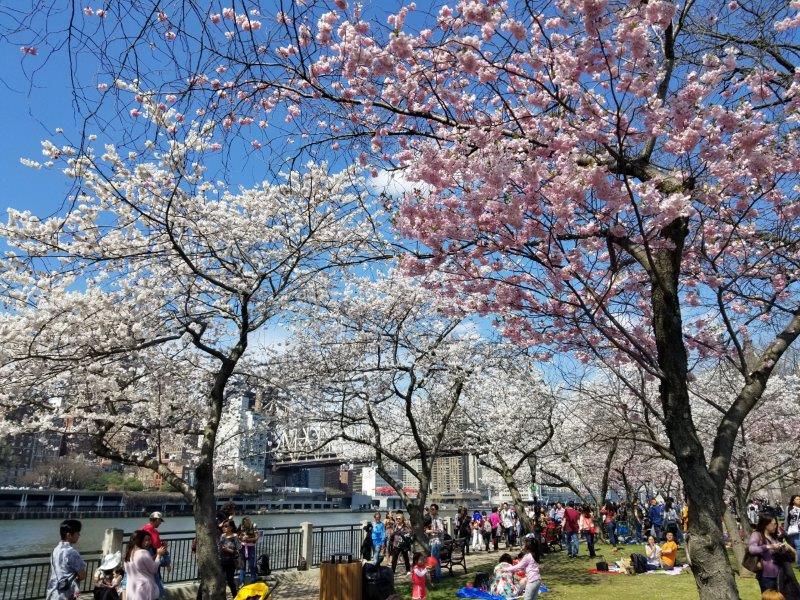
Closing Thoughts
Manhattan is a borough of New York City that is divided into several neighborhoods, each with its own unique character and charm. New Yorkers and visitors tend to gravitate towards neighborhoods that resonate with them, although the diversity in both Manhattan neighbourhoods and its people is what makes Manhattan the special place that it is.
Some of the most well-known neighborhoods in Manhattan include the Upper East Side which is known for its world-class museums, Upper West Side which is known for its historic architecture, cultural institutions, and diverse community, Midtown which is known for its bustling streets, towering skyscrapers, and iconic landmarks, including the Empire State Building, Times Square, and Rockefeller Center, Chelsea which known for its art galleries, trendy restaurants, High Line and nightlife scene, Greenwich Village which is known for its bohemian vibe, historic architecture, and vibrant arts scene, SoHo which is known for its trendy boutiques, art galleries, and cobblestone streets, and the list truly goes on. Here is a high level Manhattan neighbourhood map:
All in all each neighborhood in Manhattan is worth exploring, and walking is the best way to get to know the City that never sleeps.

